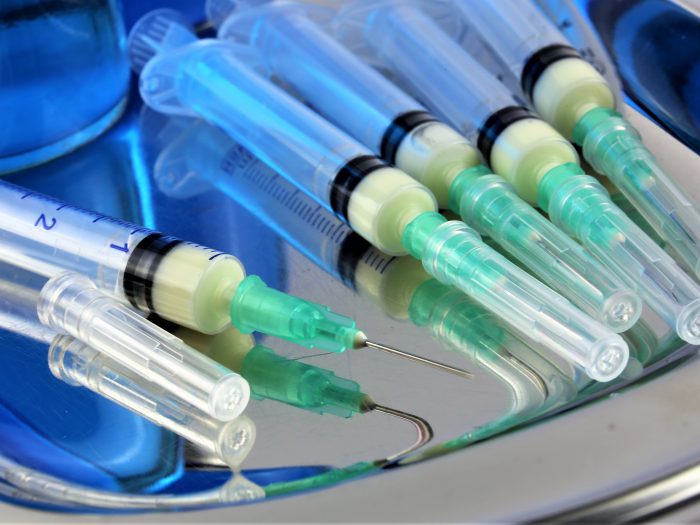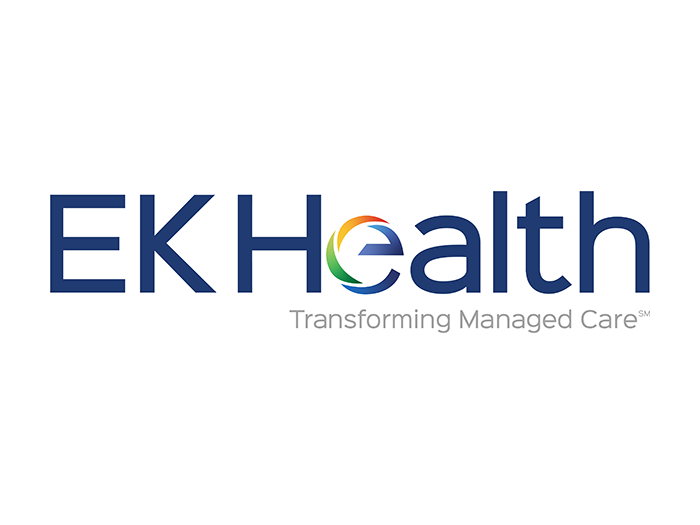Sponsored Content by Concentra
3 Ways Telemedicine Can Improve Care for Bloodborne Pathogen Exposure in Workers’ Comp

In the U.S. alone, roughly 600,000 health care workers suffer needlestick injuries each year, according to the National Institutes of Health. The true number of incidents is likely higher, since that estimate does not encompass other at-risk employees such as cleaning staff.
“Health care workers in hospitals, dialysis centers and pharmacies are all susceptible to this injury, as are environmental services staff in any industry, who could be accidentally stuck by a needle hidden in the trash or may have to handle materials contaminated with blood,” said Ann Schnure, Vice President of Telemedicine at Concentra.
Errant needles and other contaminated materials carry the risk of exposure to bloodborne pathogens like Hepatitis B, Hepatitis C and HIV — all of which require lifelong care.
“Bloodborne pathogen (BBP) exposure is especially stressful for employees because of the fear of the unknown. Exposed workers don’t always know the health history of that person whose blood they are handling,” said Dr. Lisa M. Figueroa, National Medical Director for Telemedicine, Concentra.
With the rollout of COVID-19 vaccines, the risk of BBP exposure is about to increase. In order to accommodate demand, more medical professionals may be called upon to administer the shots, increasing the likelihood of accidental sticks.
“Given our previous experience with needlesticks with other things like flu vaccines, I certainly expect an uptick in this as we roll out COVID vaccines, unfortunately,” said Beth Hostetler, Director of Medical Provider Programs at Albertsons.
Fortunately, the pandemic has also fueled the growth of telemedicine, which is well-equipped to address BBP exposure and help exposed patients get the best and fastest care possible. Here are three advantages offered by telemedicine in the management of BBP exposure in workers’ comp.
1) Speed, Convenience and Cost Effectiveness

Ann Schnure, Vice President of Telemedicine, Concentra
Employees who have been exposed to another person’s blood naturally feel very anxious about the potential risks to their health and want answers as quickly as possible.
An in-person visit with a clinician takes time and presents scheduling challenges. The clinician may have limited appointments available, and the exposed employee may need to adjust their work schedule or arrange transportation to make the earliest available appointment.
If the exposure occurs after-hours, the employee may choose to go to an emergency department or urgent care center for faster care, which comes with significant cost.
Telemedicine removes these barriers to care.
“Exposed employees can connect with a clinician the same day that the exposure happens, and they can do it from anywhere — no need to take off from work or rearrange their schedule,” Figueroa said. “Once connected to Concentra Telemed, employees have a dedicated care coordinator to help them get registered and navigate next steps. The platform is very easy to use.”
“Needlesticks are a stressful event. Having quick access to a physician is essential, and in the current environment with COVID, doing it without in-person contact helps minimize the stress even further. We see it as a win/win all the way around,” Hostetler said.
Around-the-clock availability of virtual visits also reduces reliance on expensive emergency care, minimizing one of the biggest drivers of claim cost.
2) Timely, High Quality Clinical Care

Dr. Lisa M. Figueroa, National Medical Director for Telemedicine, Concentra
Timely access to a high quality, experienced clinicians is crucial. Concentra’s telemedicine clinicians are occupational health experts who are skilled at providing an exceptional virtual care experience.
“Concentra Telemed is connected with our medical centers using one electronic medical record to ensure continuity of care by bridging virtual and in-person visits. As the clinician gathers health history and incident information from the injured employee during their virtual appointment, he or she can enter that data directly into the patient’s EMR,” Figueroa said. “Our bloodborne pathogen note template also incorporates evidence-based clinical guidelines and contains links to additional resources if needed.”
In essence, quality is built directly into the telemedicine experience. With one click, the clinician can order the necessary bloodwork as well as post-exposure prophylactic medications, which ideally should be administered within hours of exposure for high-risk employees.
“The EMR generates a lab requisition that is sent to the employee via secure email to take to the nearest lab drawing facility. Results are then uploaded to the EMR. The same goes for prescriptions … the clinician can order them directly from the EMR, so they are ready to pick up as soon as the employee gets to the pharmacy,” Figueroa said.
3) Source Patient Outreach and Efficient Claim Management
Bloodborne pathogen exposures can result in long-tail claims if the employer is unable to identify the individual whose blood the employee came in contact with. If that source of infection is known early and the individual is willing to have their blood tested, clinicians can know right away whether any pathogens are present. If the individual’s blood is pathogen-free, then there is no risk to the employee and care can cease safely.
When the source is not known, however, the claim can take anywhere from six months to a year to resolve. That’s how long it can take for a pathogen to become measurable in the employee’s blood. During that time, the exposed employee will require regular follow-up lab visits and continue to take prophylactic medications, which are designed to prevent disease from occurring.
“Having the ability to identify the source and order lab tests for the individual can make a big difference in the outcome of a claim. If we can confirm there is no threat to the exposed employee and end their follow-up care and medications, the cost savings are significant,” Schnure said.
“Identifying the source and providing that individual with access to care has historically been challenging,” Hostetler said. Telemedicine significantly alleviates that pain point.”
An Innovative, Patient-Focused Platform
Since the beginning of the pandemic, Concentra has seen a drastic increase in utilization of its telemedicine and telerehab platforms, proving that virtual delivery of care can result in optimal clinical and cost outcomes. Now, the use case for bloodborne pathogen exposure has earned the same validation.
What makes Concentra’s platform stand out are its advanced technical capabilities and the expertise of the clinical staff.
“In addition to clinical documentation tools, e-prescribing and interfaces with third party providers, our EMR system has auto communication capabilities that we use to keep employers in the loop,” Schnure said.
“All of the paperwork needed by employers and payors, including billing information and state workers’ comp forms, are sent via our EMR through our practice management system. That happens automatically at the end of a visit.”
Employers can access that information through a dedicated portal or via email or fax. The method of communication is governed by pre-defined rules established for each employer and built into the system. That capability reduces burden on adjusters and expedites case management by digitizing some manual processes.
Of course, the real value for employees who have BBP exposure lies in the delivery of patient-focused care by skilled clinicians.
“All of our clinicians are trained in occupational medicine,” Figueroa said. “We have a National Medical Director for Infectious Disease and Travel Medicine, Dr. Michael Holzer, who produces training material that our clinicians engage with regularly.”
As the potential for telemedicine in workers’ comp and occupational health continues to expand, Concentra’s approach will continue to be governed by a focus on quality.
“We’ll expand use cases for our platform only where we know we have the expertise and capabilities to properly fulfill a need,” Figueroa said. “We’re continually thinking about innovation, but quality always comes first.”
To learn more about Concentra’s telemedicine offerings, visit https://www.concentra.com/occupational-health/telemedicine/.
This article was produced by the R&I Brand Studio, a unit of the advertising department of Risk & Insurance, in collaboration with Concentra. The editorial staff of Risk & Insurance had no role in its preparation.










